Pb Oxide Floatability & Selectivity VS Sulphidizer Usage
The use of a sulphidizer is common in oxide flotation recovery. Na2S (Sodium Sulfide) can help “activate” oxide minerals behave as sulfides. The tests performed by both vendors showed noticeable technical differences between both reagents. AM2 constantly requires the use of Na2S as its copper activator while CTC3 does not rely on Na2S. This dependence […]
Naturally Floating Gold and Silver Lost in Pre-Flotation
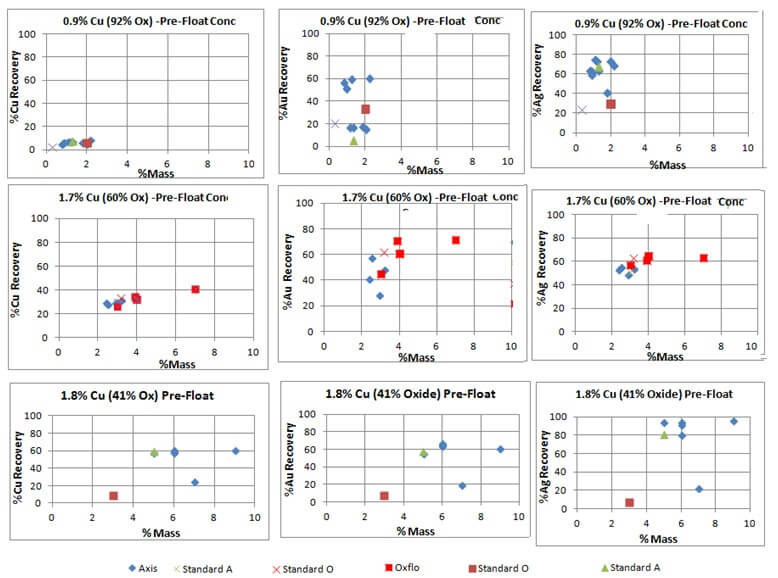
It is clear the Pre-Float stage creates much looses in Cu, Au and Ag. Mineralogy work on this stream would help understand why the metals are naturally floatable using only MIBC. Knowing the cause of this floatability (chemical, physical or mechanical) would open the opportunity to implement solutions that would increase Cu, Au and Ag […]
Copper Oxide Flotation
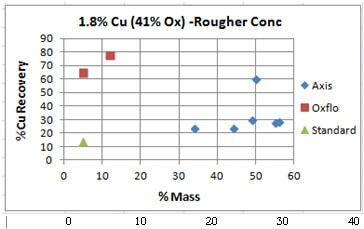
Continuing with the evaluation of copper oxide flotation using hydroxamate we now evaluate a rock that’s 41% copper oxide with some lead oxide included. Sample B: 1.8% Copper about 41% Oxide Cu Rougher Tests: Unseen in these charts is the order in which the results were obtained. The last/best “Blue” dot (the best data point) […]
The Importance of %Mass Pull in a Flotation Circuit | What is Flotation Mass Pull
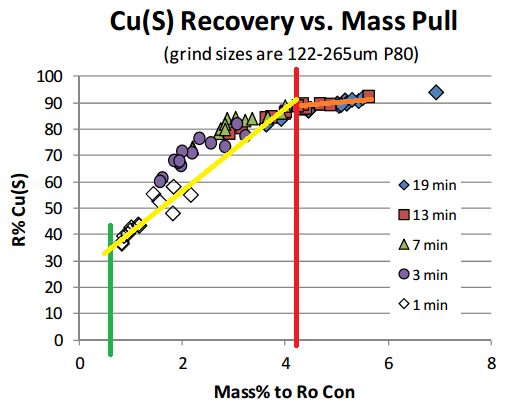
What is flotation mass pull and why does it matter so much? If we consider the total Plant Feed of 2800 TPD as 100% of the mass and we produce say 59% Cu Recovery or 84 TPD of Cu conc, we would find that 3% of the “mass” is in the concentrate. We therefore label […]
HydroCyclone Parts

Compare the Benefits of Steel VS Rubber Mill Liners

When are steel liners better than rubber/poly-met liners in a SAG mill or Ball Mill? Let’s compare! Rubber Liners are better for abrasion grinding ie: cascade action but not for cataract mills. The graph below shows the increased operating cost of rubber and steel liners as the grinding ball size increases. Larger mill, larger ball… […]
Relationship of Concentration to Specific Gravity in Slurries | Nomograph
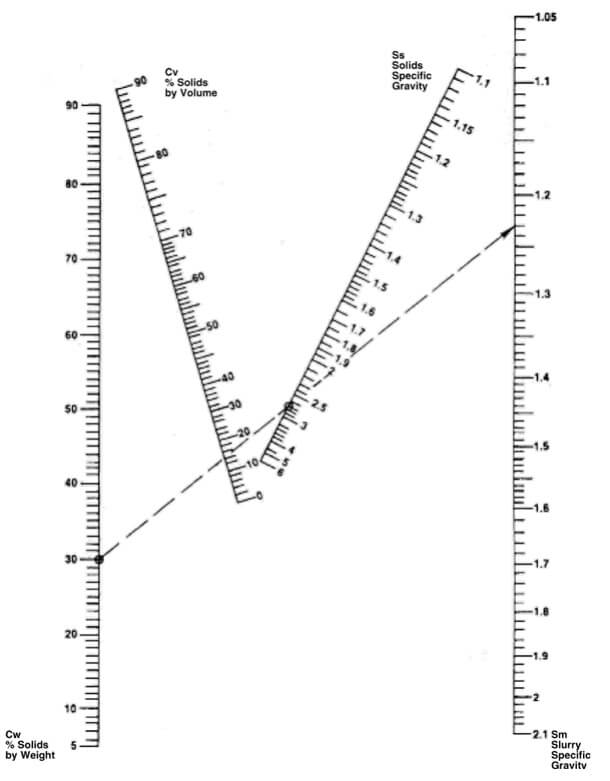
https://www.911metallurgist.com/milling-calculations-formulas
Calculate Slurry Flow / Volume
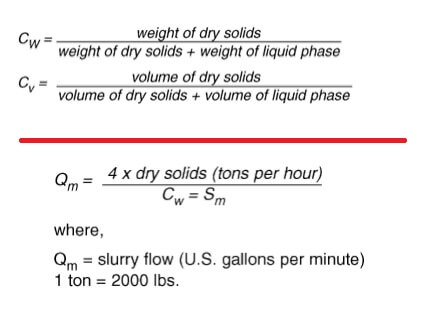
An example of how you can calculate the slurry flow/volume of a given SG, %Solids and Tonnage. EXAMPLE: 3,400 tons of dry solids is processed in 24 hours in water with a specific gravity of 1.0 and the concentration of solids by weight is 33% with the solids having a specific gravity of 3.7 then […]
Concentration and Specific Gravity of Slurry

Ore specific gravity Pulp Density Relations
Percent Solids to Specific Gravity Conversion of Slurry

Here is the formula for specific gravity of a slurry, S is: S = specific gravity of slurry Si= specific gravity of liquid phase Ss= specific gravity of solids phase Cw = concentration of solids by weight Cv= concentration of solids by volume EXAMPLE: if the liquid has a specific gravity of 1.2 and the concentration […]
